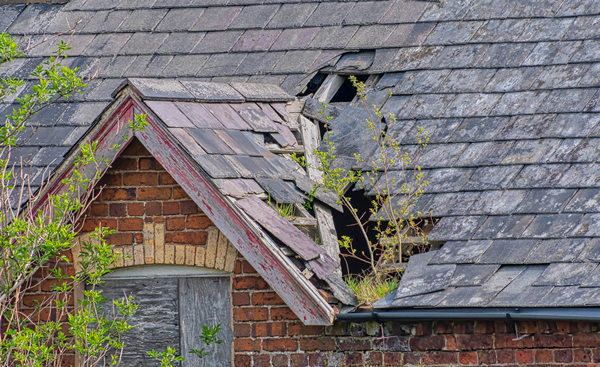How to Get Homeowners Insurance With a Bad Roof
Author: Lee Polevoi | March 3, 2021
As a homeowner, do you know how to get homeowners insurance with a bad roof? After all, home insurance companies "view roofs as one of the most important parts of a home," according to Insurance.com. If your roof is in disrepair, the damage could lead to leaks or structural weaknesses inside the home, which could mean more insurance claims.

So, is there anything homeowners can do to lower their insurance rates? Can you make small repairs to lower cost, or is an entire roof replacement necessary? Here are a few suggestions to keep in mind if you're buying a home or taking out a new policy.
Homeowners Insurance Coverage: The Big Picture
It's important for homeowners to understand how insurance companies take a big-picture approach when deciding who to insure. Part of that broad look is looking closely at the region where a particular home is located.
Of the many parts that make up a house, "the roof arguably has the most direct exposure to the elements," notes Investopedia. There are ice and snow to contend with in northern states, along with tornadoes in the Midwest and hurricanes in the South.
All of these factors enter into the elaborate calculations that drive insurance companies and the coverage they offer. There's not much you can do about the region your home is located in, but you can consult local insurance brokers to find out how certain roof types and materials might affect insurance prices in the region. For example, in an intense wind area, a gable roof may be more favorable than a flat roof to a potential insurer.
A Roof in Poor Condition May Cause Higher Premiums
A roof's condition is vital in determining the cost of homeowners insurance. Over time, roofs will inevitably wear out and need occasional replacement.
Look for any signs of damaged, missing or misshapen roofing materials, such as curling asphalt shingles, broken slates or mold and moss on the roof. You should also look out for damage to the other parts of your roof system, such as cracks in your chimney flashing (the metal plates where the chimney joins the roof ridge) or gutters that are hanging off the roof.
Other warning signs of a roof in disrepair include mold, peeling paint or dark and spongy spots in the interior of your attic or top floor.
If you inspect the roof yourself, observe basic safety rules like placing ladders on level ground and not walking on a wet or slippery roof. Be sure to call an experienced contractor for help if you have any concerns about safely inspecting your roof.
If your roof is in disrepair, it's best to anticipate that your homeowner's insurance application will come with some unwelcome conditions. An old or damaged roof typically results in the homeowner being charged a higher insurance premium.
What Happens With a Roof Inspection
Some roofing businesses will charge a minimal amount for a thorough roof inspection (or offer free service, anticipating future business). But it's also likely that if you apply for coverage, a homeowners insurance company will want to conduct the roofing inspection themselves. In this case, you can move the process forward by ensuring you have the following:
- A copy of your existing homeowners insurance policy.
- Any copies of prior home inspection reports.
- Receipts for work done by roofing contractors.
- Before-and-after photos of your roof showing the extent of the damage, if you're looking at a claim or sudden change.
Prior to a roof inspection, it's a good idea to clear any debris off the roof. Clean the gutters, get rid of any standing water and trim back any tree branches near the roof. All of this will help speed up the process and bring you closer to getting the insurance coverage you want.
Need a New Roof? Explore Financing Options First
Homeowners should expect that repairs will be necessary if their roof is more than 20 years old. Sprucing up an old roof may improve the odds of securing homeowners insurance without paying an arm and a leg in premiums. Repairing or replacing your roof can be a valuable upfront investment, but it doesn't need to cause financial hardship if you plan ahead.
Instead of learning how to get homeowners insurance with a bad roof, you can learn how to budget for a better roof. If you have equity built up in your home over time, one option is taking out a home equity loan. Working with a bank or other financial institution, you can arrange for a loan to pay for a roof inspection and/or repair services by using your home's equity as collateral for the loan.
Another option is to look for local contractors that offer homeowner financing options. Choosing a contractor who will help you plan to pay for your roofing work overtime (without sticking you with hidden fees) will let you make important repairs without breaking the bank.